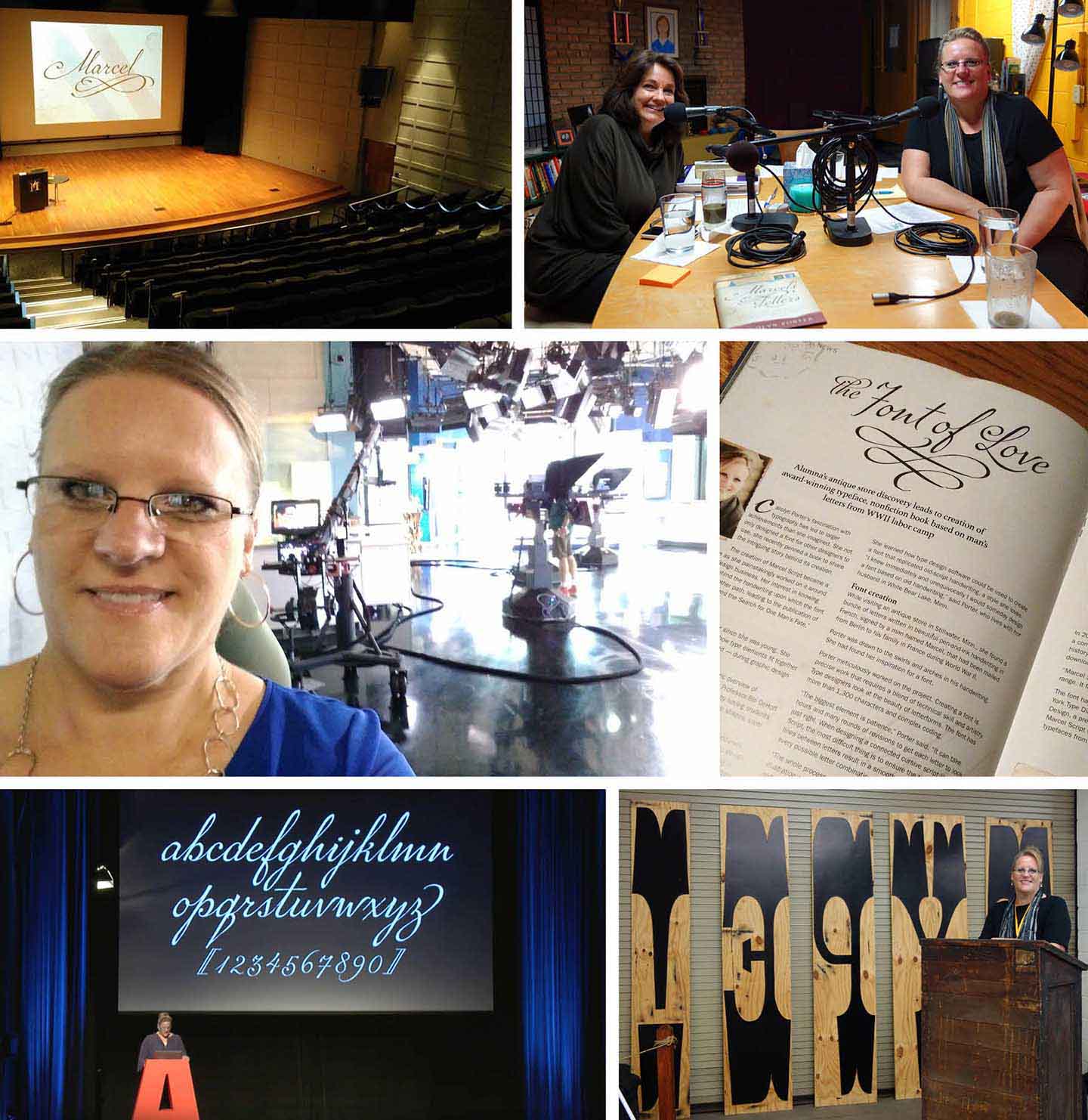At the beginning of 2017, as I committed my annual goals to paper, I scribbled this quote by author Emily Liebert across the top of the page: “Jump at every opportunity. Throw everything at the wall.” The sentiment reflects the reality of book marketing, which is that the bulk of promotion is the responsibility of the author.
The process of writing the book Marcel’s Letters: A Font and the Search for One Man’s Fate was easy enough for an introvert. Working alone, on my laptop, was safe and comfortable. The thought of being on live television to promote the book, however, or being interviewed on live radio or standing on a stage in front of hundreds of people was something else. Those things were far, far out of my comfort zone. Just thinking about being so public could make me break out in splotchy red hives. For every one thing that could go right, I imagined ten things that could go wrong and forever live online. Yet, I also knew I had to do this promotional work if I hoped anyone would learn about the book. I needed to jump at every opportunity and throw everything against the wall. So, I embraced the mantra “jump and throw.”
My publicist secured a segment on a local network television station’s morning show the week the book was released. It was an incredible opportunity. In preparation, she suggested I make flash cards and practice succinctly answering questions the co-anchors were likely to ask: Why did you design a font? Who was Marcel? What was in Marcel’s original handwritten letters?
I practiced and practiced. But I began to memorize answers, which was a problem because memorized answers could hinder a fluid conversation.
The day before I was scheduled to be on air, I asked my husband if he would help me practice. We set two chairs near each other — replicating the seating on the studio set — and he pretended to be an anchor. He thanked me for being on the show, then asked a simple question. A softball question. But it wasn’t one I had practiced. And I froze. For many long seconds I stared at him, incapable of moving my mouth to answer. Then my eyes welled with tears, certain I was doomed do the same thing the next morning live on air.
He told me to take a deep breath, and we started again. I got through the mock interview. Then we did another. During the third mock interview he tossed in a few inappropriate questions. “Just to keep you on your toes,” he said with a smirk. By the end of the fourth mock interview I was answering questions while trying to hold in laughter at his increasingly inappropriate questions, which by then were accompanied with equally inappropriate gestures. Laughter, it seemed, was the best possible preparation.
In the end, the interview went fine. I think. I still haven’t watched it. Watching yourself on television is slightly more painful than listening to your own voice on an answering machine. Besides, I decided to focus my time and energy preparing for the next opportunity.
By year’s end, I’ve been on television twice, live radio twice, taped four podcasts, and been on stage numerous times — including at ATypI in Montreal. Being so public is still neither easy nor comfortable, but each time I learn lessons that make the next appearance better. Jump and throw, jump and throw.

Top left: The stage is set for a presentation at the Minnesota History Center. Top right: Interview with Nancy Meyer of WeMentor, Inc. Middle left: About to be interviewed on WCCO-TV. Middle right: Magazine feature. Bottom left: Speaking at ATypI. Bottom right: Preparing to speak at Hamilton Wood Type & Printing Museum.
